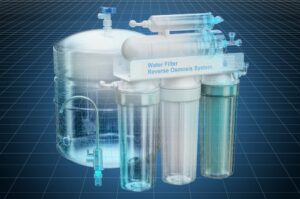Just because you plan on being away at sea for a while doesn’t mean you must give up any and all modern amenities. You don’t need to totally leave behind the convenience, comfort, and safety of technology if you bring along a marine battery charger. The question is, which one?
Here at CruiseRO Water & Power, we’re cruisers too! We’ve gone through exactly what you’re facing right now. This is why we want to help you find the perfect product before you leave for your trip, whether it is a water maker or a battery charger. With this in mind, we put together a quick guide for you.
Choosing a Marine Battery Charger
Sure, you need fresh water– but you need a lot more than that. The batteries that power your boat are critical to ensuring a safe and fun trip out on the water. One of the last things any boater wants to encounter is a dead battery while out on open water. That is why keeping your boat’s batteries at peak performance should be a main priority during the duration of your trip. This can be done by selecting the right marine battery charger. Here’s how to know exactly what you’re looking for:
Understanding Your Battery
To determine the exact kind of marine battery charger you need, you must first determine the type of battery you have. There are three parameters:
Input voltage: Marine battery input voltage is either 120 or 230 VAC.
Battery capacity: This figure should be listed on the battery as “Ah,” which stands for amp hour.
Battery type: Do you have a gel, AGM, or flooded battery?
Once you have this information, you’ll be able to select the correct battery charger.
Voltage
The voltage of the charger must match the output voltage of the battery. As a simple example, if your boat has a 12v battery, you need a 12v charger.
Amps
For a battery, think of amps like speed. A higher amp rating means that the recharging process will go much quicker. That’s what you want, to charge as quickly as possible. The amps depend entirely upon the size and type of your battery.
Temperatures
The last thing to keep in mind is the outdoor environment your battery and charger will be in. Most boats are operated in temperature ranges of 50F to 90F. If your itinerary is taking you to a more extreme place, you’ll need to make special considerations. If you plan on running your boat in temperatures higher than 90F, you’ll need a lower charging voltage. On the other hand, if you are taking your boat far north or far south in temperatures lower than 40F, you’ll need a much higher charging voltage.
With any additional questions, feel free to reach out and ask us. We want to make sure you have the right product, and we’re happy to help you find it!




